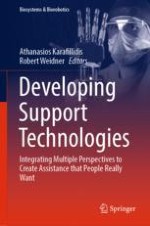2018 | OriginalPaper | Buchkapitel
Musculoskeletal Simulation and Evaluation of Support System Designs
verfasst von : Jörg Miehling, Alexander Wolf, Sandro Wartzack
Erschienen in: Developing Support Technologies
Aktivieren Sie unsere intelligente Suche, um passende Fachinhalte oder Patente zu finden.
Wählen Sie Textabschnitte aus um mit Künstlicher Intelligenz passenden Patente zu finden. powered by
Markieren Sie Textabschnitte, um KI-gestützt weitere passende Inhalte zu finden. powered by
